Aomori and more
- Sort by
- Popularity
- Name
-
Nambu ironware Nambu tekki
- Metal works
- Iwate

Nambu Ironware (called Nambu tekki in Japanese) is a form of metalwork produced in Morioka City and Mizusawa, Oshu City in Iwate prefecture. It is a traditional craft that was first created in the middle of the Edo period (1603-1868). The name �…
View more
-
Shigaraki ware Shigaraki yaki
- Ceramic
- Shiga
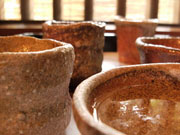
Shigaraki ware (called Shigaraki yaki in Japanese) is a type of pottery made around the town of Shigaraki in Shiga prefecture. Clays such as kibushi, mizuchi, or gairome are kneaded to make a strong clay that can be used to make thick and large p…
View more
-
Yuki tsumugi silk Yuki tsumugi
- Woven textiles
- Ibaraki

Yuki tsumugi silk is produced principally in the reaches of the Kinugawa River that straddles the Ibaraki and Tochigi prefectures. The Japanese name Yuki tsumugi comes from the name of a feudal lord during the Kamakura period (1185-1333), Yuki. Al…
View more
-
Kasama ware Kasama yaki
- Ceramic
- Ibaraki

Kasama ware (called Kasami yaki in Japanese) is a form of porcelain produced in the area around the city of Kasama in Ibaraki prefecture. This porcelain has long been considered a traditional souvenir of visiting Kasama Inari shrine (one of Japan&…
View more
-
Tsugaru lacquerware Tsugaru nuri
- Lacquerware
- Aomori

Tsugaru lacquerware (called tsugaru nuri in Japanese) is produced around the city of Hirosaki in Aomori prefecture. Lacquerware has been produced in this region since the middle of the Edo period (1603-1868), but it began to be called Tsugaru lacq…
View more
-
Iwayado traditional chest Iwayado tansu
- Wood, bamboo crafts
- Iwate

Iwayado tansu is a traditional woodwork made in the cities of Oshu and Morioka, Iwate prefecture. Tansu means chest of drawers. In addition to clothing or organization chests, daily use items like tea cabinets, book shelves, and low tables are mad…
View more
-
Otani ware Otani yaki
- Ceramic
- Tokushima
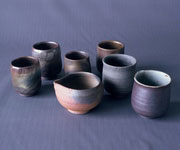
Otani ware (called Otani yaki in Japanese) is a form of ceramics that is the most famous product of the city of Naruto in Tokushima prefecture, and is the representative craft for the prefecture. The notable characteristics of Otani ware are its s…
View more
-
Joboji lacquerware Joboji nuri
- Lacquerware
- Iwate
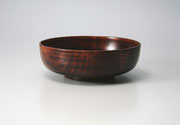
Joboji lacquerware (called Joboji nuri in Japanese) is produced in the town of Joboji in Iwate prefecture. More than 98% of the lacquer used in Japan is imported from China or other countries. The Joboji area is known as the leading producer of do…
View more
-
Hidehira lacquerware Hidehira nuri
- Lacquerware
- Iwate
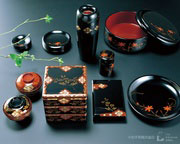
Hidehira lacquerware (called Hidehira-nuri in Japanese) is produced in the area around the town of Hiraizumi, in Iwate prefecture. The defining feature of Hidehira lacquerware is the use of gold leaf produced in the area around Hiraizumi, which re…
View more
-
Tendo Japanese chess pieces Tendo shogi koma
- Other crafts
- Yamagata
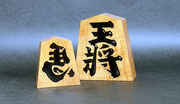
Tendo Japanese chess pieces (called Tendo shogi koma in Japanese) are made in the cities of Tendo, Yamagata, and Murayama in Yamagata prefecture. Production is thought to have begun in Tendo back during the Edo period (1603-1868) and now the city …
View more
-
Yamagata cast iron Yamagata imono
- Metal works
- Yamagata
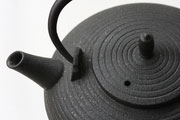
Yamagata cast iron (called Yamagata imono in Japanese) is produced in the city of Yamagata, Yamagata prefecture. At first, metal fittings, Buddhist statues, and daily use items were made. Then, as skills and techniques were developed, iron kettles…
View more
-
Omi ramie cloth Omi jofu
- Woven textiles
- Shiga
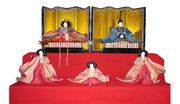
Omi jofu is a textile produced in the region surrounding the town of Koto in Shiga prefecture. It is made with handwoven ramie threads. This craft has chic kasuri* or ikat patterns and a refreshing texture from being woven with fine ramie threads.…
View more
-
Suruga bamboo crafts Suruga takesensuji zaiku
- Wood, bamboo crafts
- Shizuoka
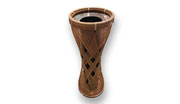
Suruga bamboo ware (called Suruga take sensuji zaiku in Japanese) is produced in the city of Shizuoka, Shizuoka prefecture. High quality bamboo has grown wild in the basin of the upper reaches of the Abe River in Shizuoka since ancient times. Bamb…
View more
-
Oitama tsumugi silk Oitama tsumugi
- Woven textiles
- Yamagata
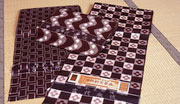
Oitama tsumugi is a silk fabric produced in the Yonezawa, Hakutaka and Nagai regions of Oitama in southern Yamagata prefecture. The area was well-known for producing and exporting ramie, a tall plant of the nettle family that has been used to make…
View more
-
Awa traditional Japanese paper Awa washi
- Traditional Japanese paper
- Tokushima
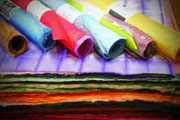
Awa washi is traditional Japanese paper made in Yoshinogawa, Naka-cho, and Ikeda-cho in Tokushima prefecture. It is produced using the traditional papermaking methods of nagashisuki (papermaking in flowing water), and tamesuki (papermaking using s…
View more
-
Hikone Buddhist altar Hikone butsudan
- Household Buddhist altars
- Shiga

Hikone Buddhist Altars (called Hikone Butsudan in Japanese) are produced in the city of Hikone, Shiga prefecture. Using luxurious materials in altar bodies which are usually larger than 121.2 cm, this craft is synonymous with high-grade Buddhist a…
View more
-
Uetsu tilia bark cloth Uetsu shinafu
- Woven textiles
- Yamagata
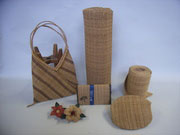
Uetsu Shinafu is a textile produced in the area of Sekikawa, Tsuruoka, Yamagata prefecture, and Sanpoku, Murakami, Niigata prefecture. The names of the neighboring prefectures of Yamagata (Uzen) and Niigata (Echigo) are combined and called Uetsu, …
View more
-
Awa-shijira cotton cloth Awa shoai shijira ori
- Woven textiles
- Tokushima

Awa Shoai Shijira Ori is a cotton textile produced in Tokushima City, Tokushima Prefecture. Shijira Ori had been produced in Awa since the 18th century, and the Shijira Ori dyed with Awa indigo was referred to as Awa Shoai Shijira Ori. It was desi…
View more
-
Suruga-hina doll Suruga hina ningyo
- Dolls, kokeshi
- Shizuoka
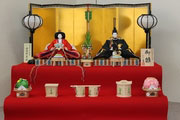
Suruga Hina Dolls are dolls made in and around Shizuoka City in Shizuoka. Suruga Hina Dolls are larger than other dolls as thick rice straw is used to form the body which is the center of the doll. It is said that rice straw was used because Shizu…
View more
-
Yamagata Buddhist altar Yamagata butsudan
- Household Buddhist altars
- Yamagata
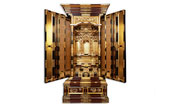
Yamagata Butsudan are Buddhist altars mainly made in Yamagata City, Tendo City, Obanazawa City, and Sakata City, Yamagata Prefecture, which distinguishes the prefecture as the largest center of altar production in the Tohoku region. Kichibei HOSHI…
View more
-
Makabe stone lanterns Makabe ishidoro
- Stonework
- Ibaraki
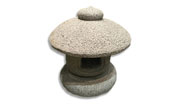
Makabe Ishitoro is the Japanese name for Makabe stone lanterns produced around the town of Makabe in the Ibaraki Prefecture. Production of this traditional craftwork started during the Kamakura period (1185-1333). The stone industry in the Makabe …
View more
-
Suruga doll accessories Suruga hinagu
- Dolls, kokeshi
- Shizuoka
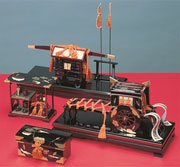
Suruga Hinagu (Hina Doll accessories) are a traditional craft produced mainly in Shizuoka city, Kakegawa city and Yaizu city in Shizuoka prefecture. A distinctive feature of Suruga Hinagu is that every piece of furniture, such as chests of drawers…
View more
- 1

































































































































































































































































































